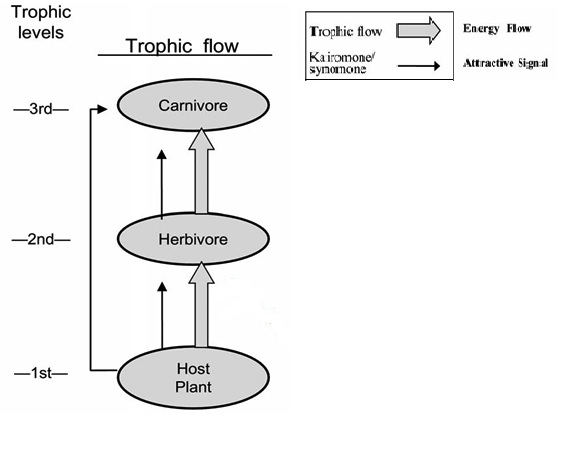Interaction of Plants, Volatile Substances and Predators in Biological Control
Plants, especially leaves usually release small amounts of volatile chemicals, but when plants are damaged by herbivorous insects, more volatile compounds are released. The identity of volatile compounds varies, depending on plant species and species of herbivorous insects. The released volatile compound may attract parasitoids and predators that are natural enemies of herbivorous insects. They can also cause defense responses to neighboring plants.
Insect predators and parasitoids utilize interesting volatile chemical signals from lower trophic levels as kairomones to locate herbivorous and host prey.

Figure 1. Semiochemical signals involved at various levels of tropical and sometimes trophic-cutting
Indonesian version
Tanaman, terutama daun biasanya melepaskan sejumlah kecil bahan kimia volatile, tetapi ketika tanaman rusak oleh serangga herbivora, lebih banyak senyawa volatil yang dilepaskannya. Identitas senyawa volatile bervariasi, tergantung spesies tanaman dan spesies serangga herbivora. Senyawa volatile yang dilepaskan itu dapat menarik parasitoid dan predator yang merupakan musuh alami serangga herbivora. Mereka juga dapat menyebabkan respons pertahanan pada tanaman tetangga.
Serangga predator dan parasitoid memanfaatkan sinyal kimia volatile yang menarik dari tingkat trofik yang lebih rendah sebagai kairomones untuk mencari mangsa herbivora dan host.